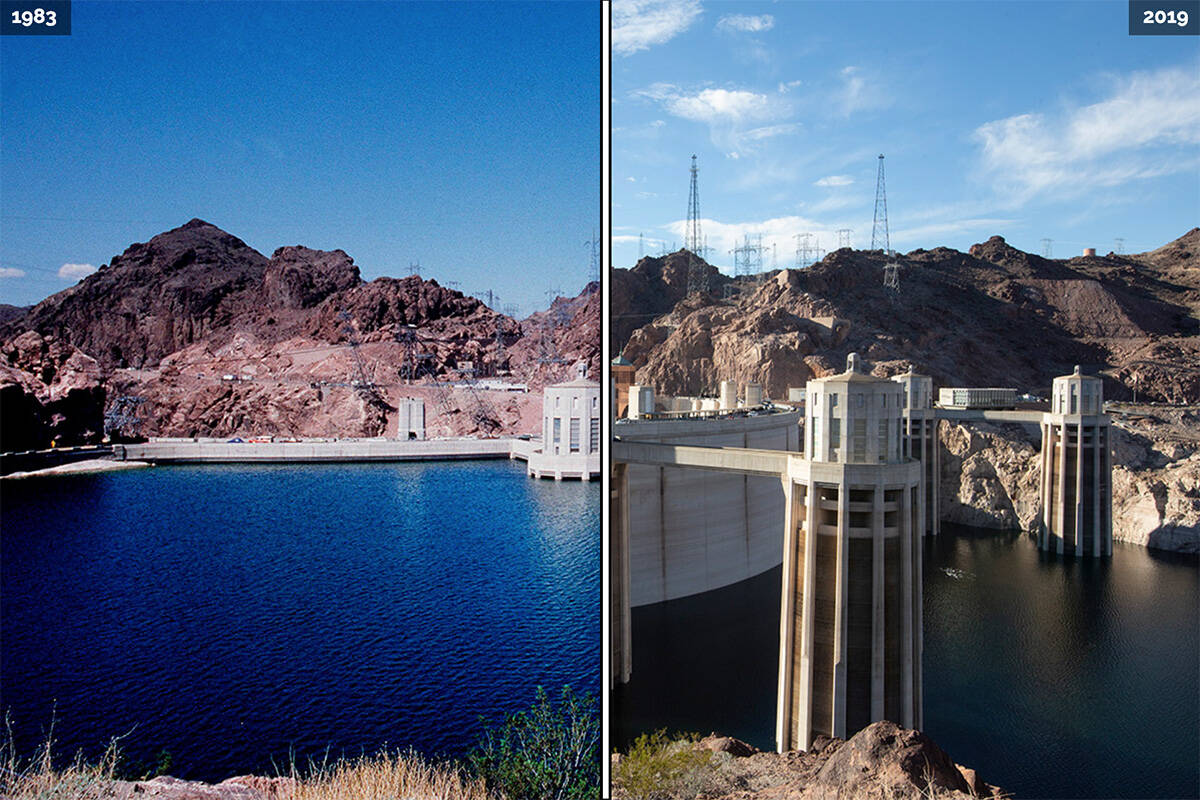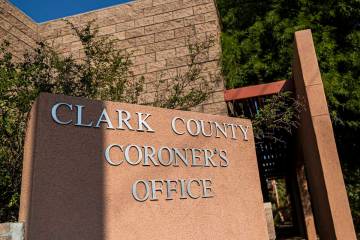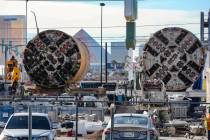Lake Mead then and now: What’s changed — PHOTOS
Lake Mead’s white ring isn’t the only sign of low water levels at the reservoir.
Declining water levels at Lake Mead are causing dramatic changes on the reservoir’s shoreline, including Lake Mead Marina’s move from Boulder Harbor to Hemenway Harbor in 2008 and the disappearance of Pyramid and Saddle islands, once surrounded by water, that are now connected to the lake’s main shoreline.
Nevada, Arizona and California, along with the Bureau of Reclamation, are developing a $100 million plan to keep more water in the lake over the next couple of years. This development follows the reservoir’s first federally declared water shortage, with 21,000 acre-feet cut from Nevada’s 2022 water allocation.
In April, the bureau projected that Lake Mead’s water level could drop more than 30 feet in the next two years based on the lake’s steady decline in past years.
Lake Mead: 1983 to 2019
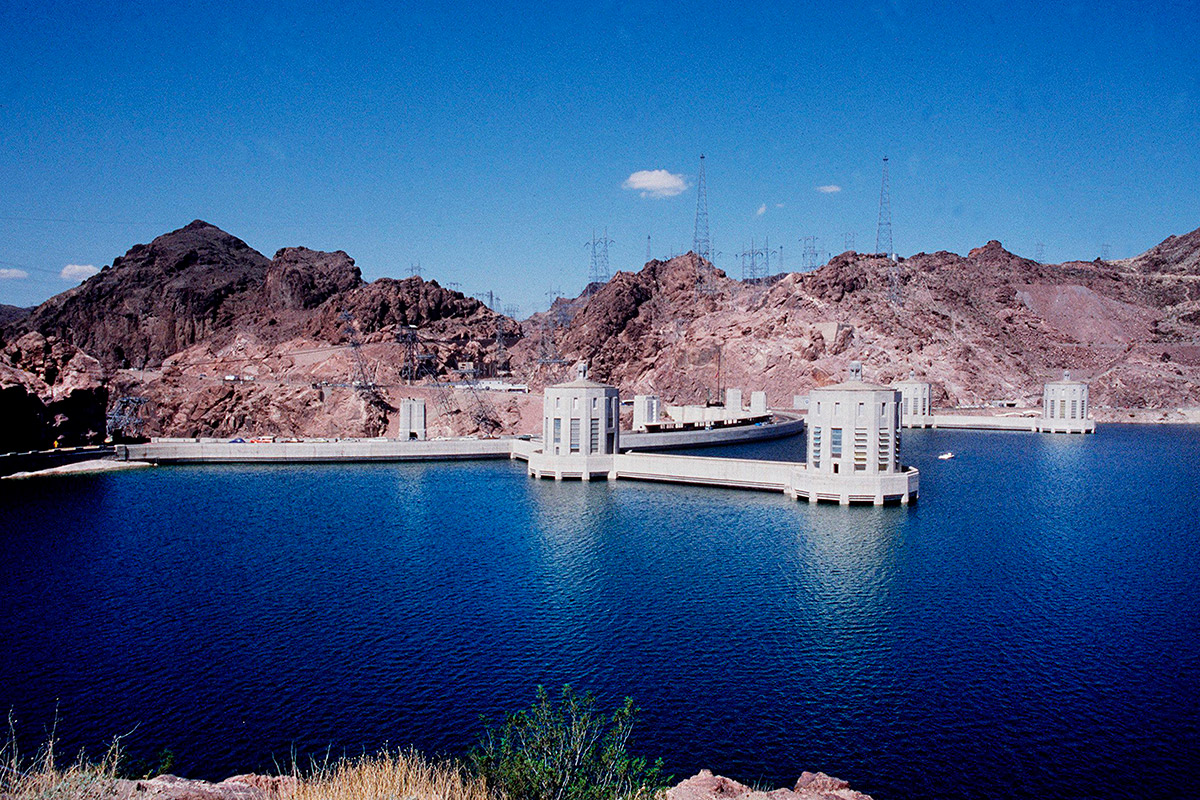
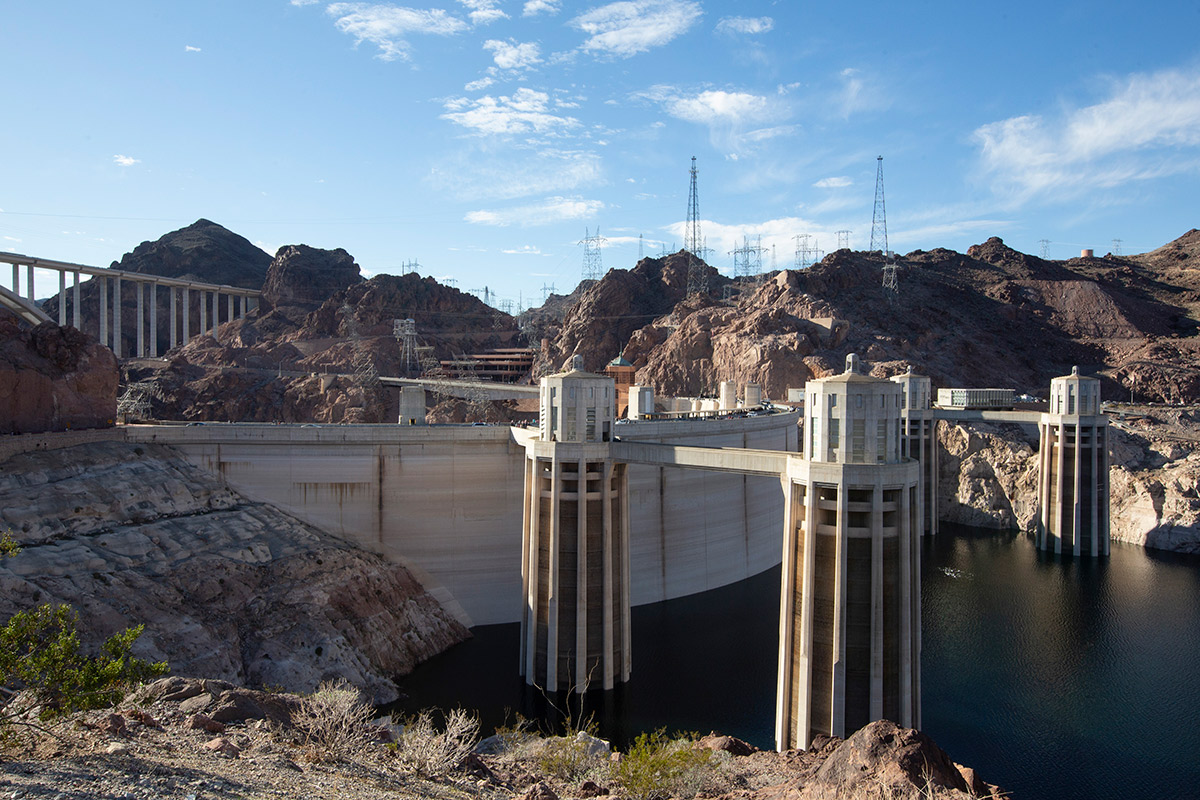
Lake Mead’s intake towers next to Hoover Dam were once only visible from the connection beams up. A photo taken in 2019 showed more of the 395-foot structures.
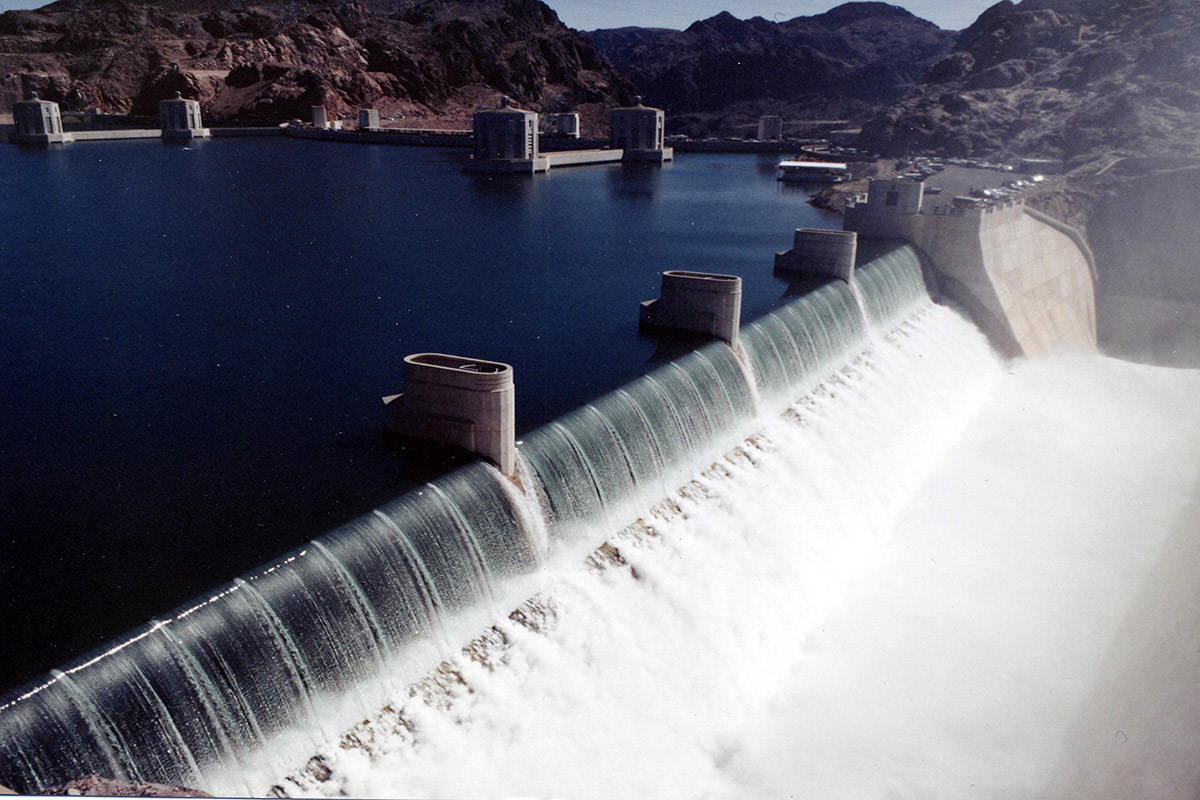
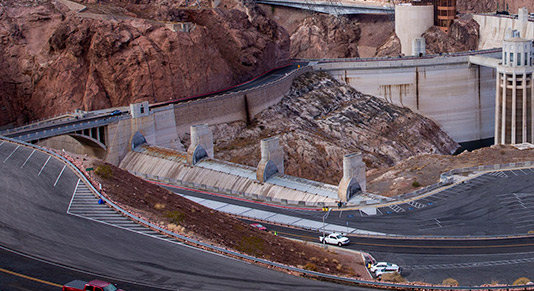
In 1983, Lake Mead reached its highest elevation of 1,225.85 feet. The water level was at 1,054.69 feet at the end of April.
Pyramid Island: 2008 to 2022
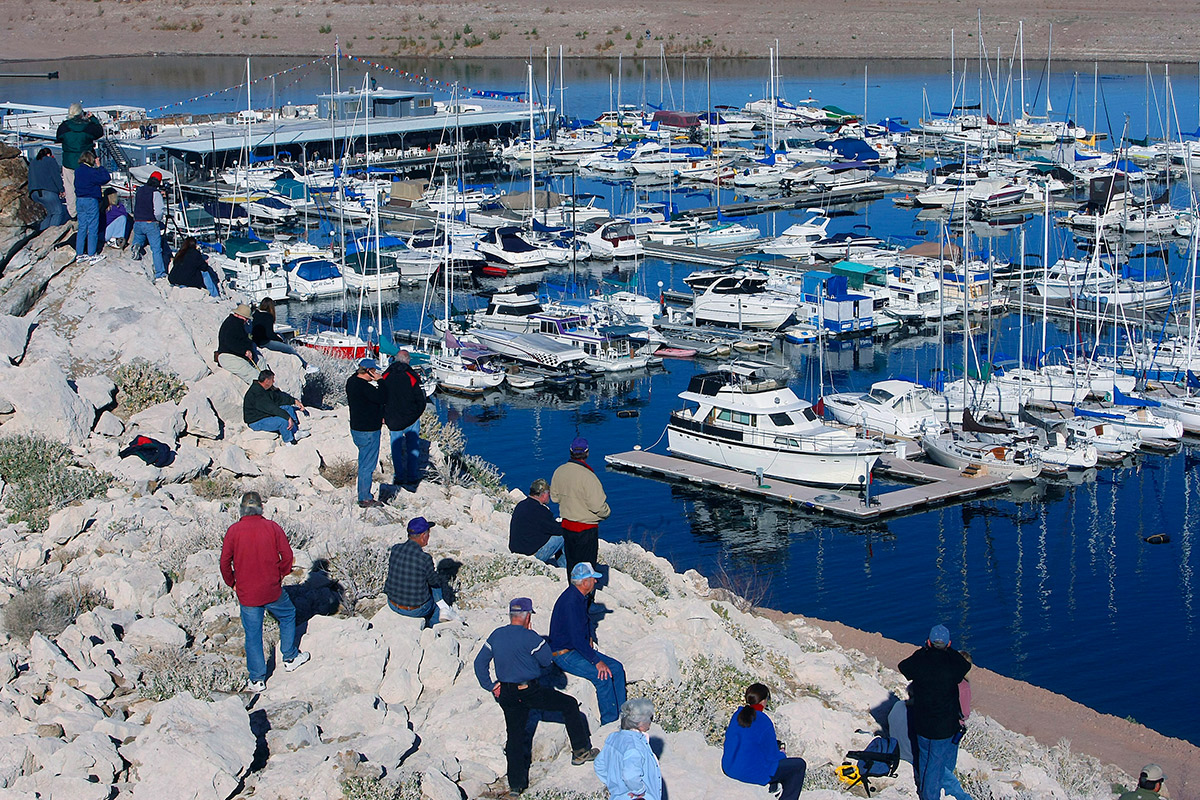
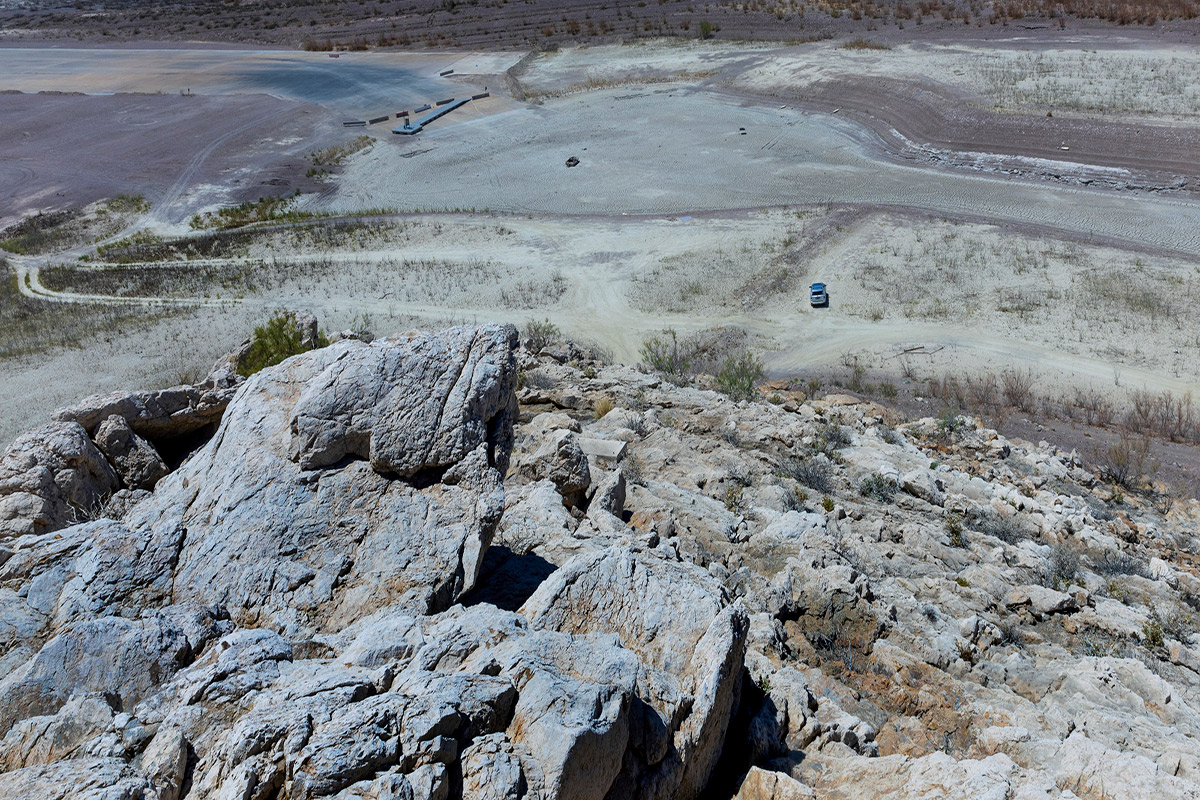
Pyramid Island, located next to Boulder Harbor, once overlooked Lake Mead Marina. Due to lowering water levels, the marina was moved two miles south, and its former site is a dry basin.
Hemenway Harbor: 1997 to 2022
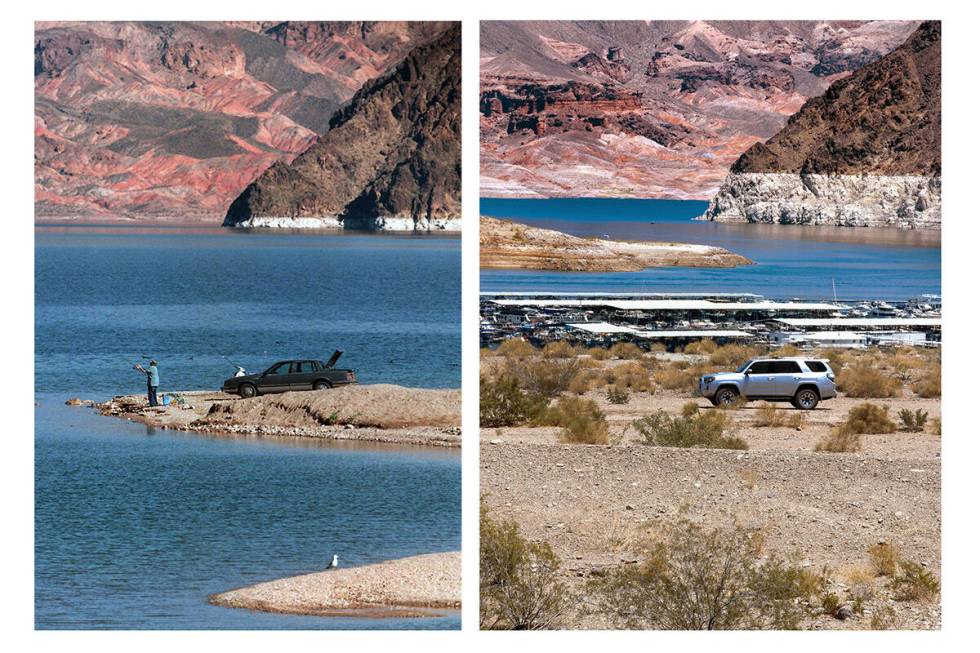
Hemenway Harbor reopened May 12 as the last launch ramp available at Lake Mead. Boats under 24 feet can launch off two pipe mats laid out at the harbor.
Willow Beach and five other launch points at Lake Mohave remained open.
Water intake valves become visible
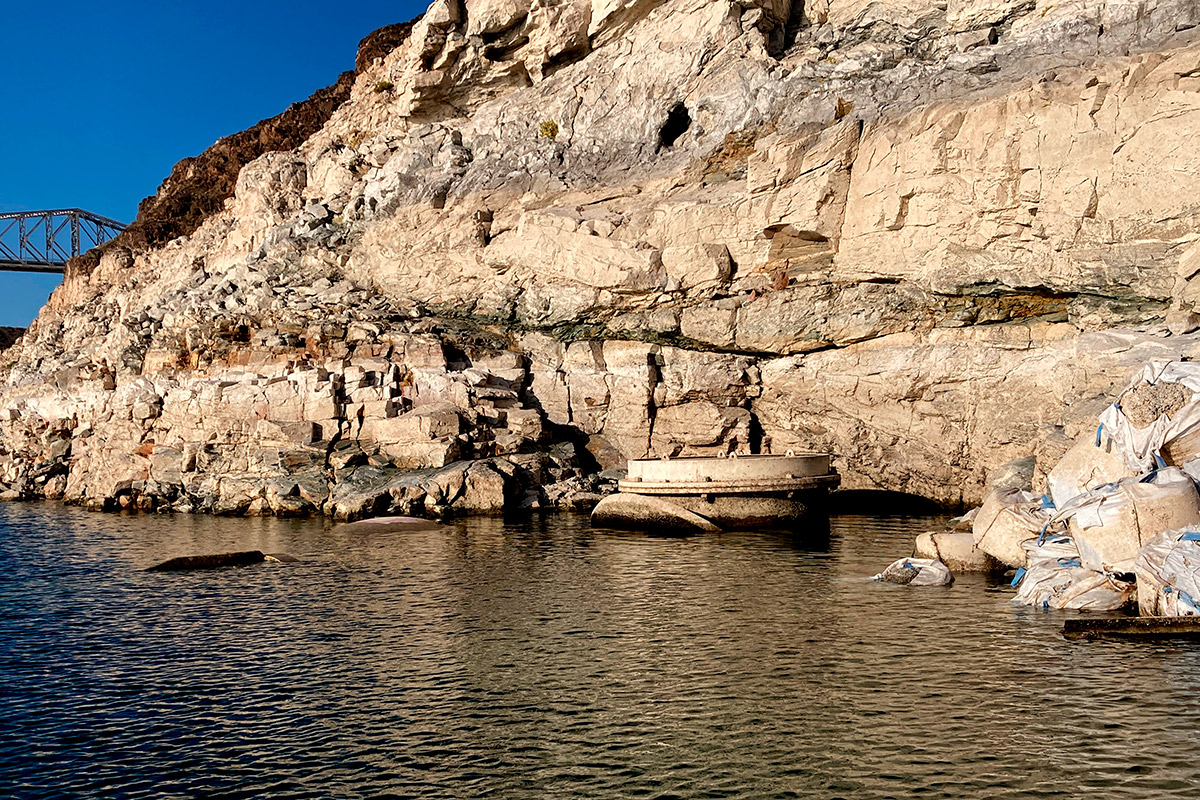
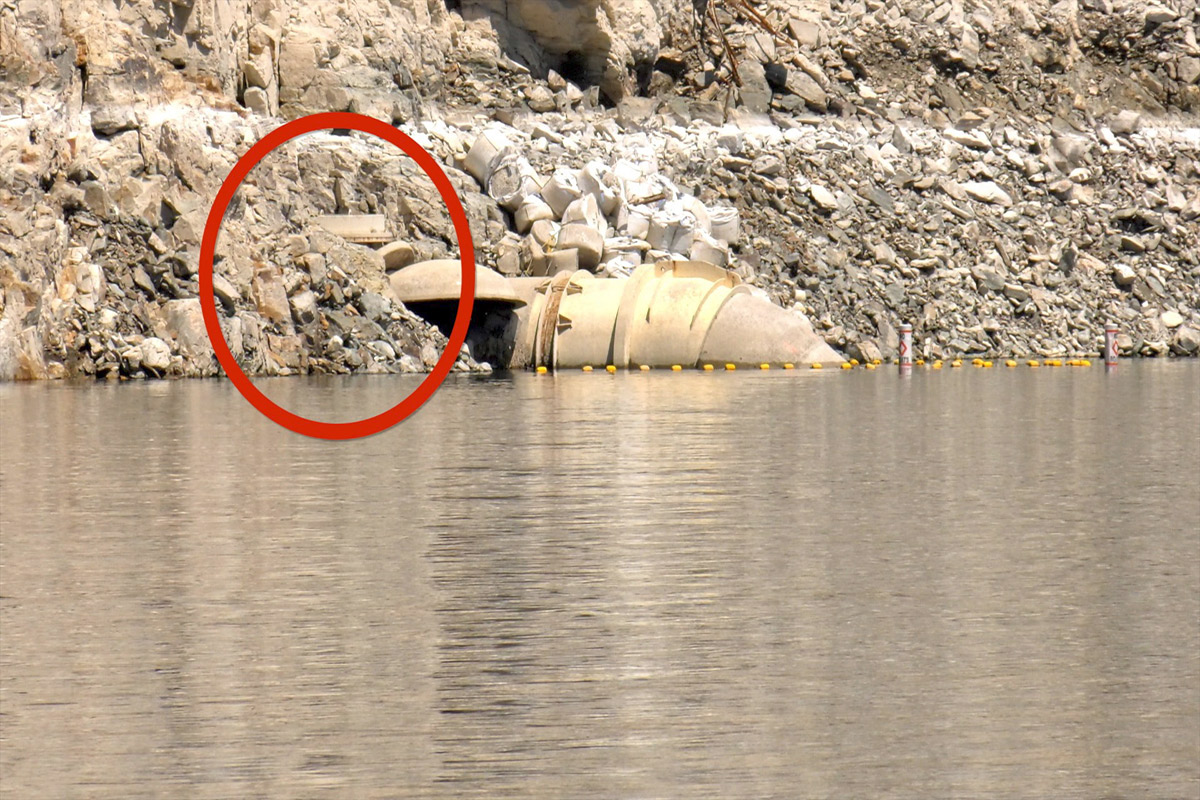
One month after the Southern Nevada Water Authority made its low-lake-level pumping station in Lake Mead fully operational, water levels dropped several feet, revealing more of the water intake valves.
The pump station, completed in April 2020 at a cost of $522 million, turned on 22 of its 34 pumps on April 1. The pumps will ensure water reaches the Las Vegas Valley even if the lake shrinks another 160 feet, which would cause Hoover Dam to be unable to release water downstream.
For more information on water in Southern Nevada, see the Review-Journal’s project, The Water Question.
Contact Taylor Lane at tlane@reviewjournal.com. Follow @tmflane on Twitter.



